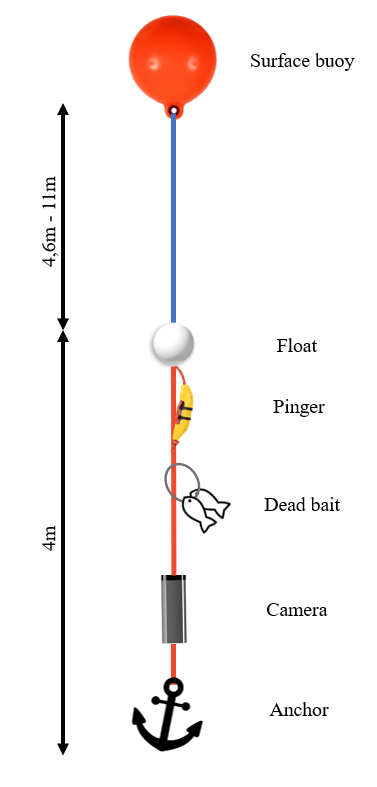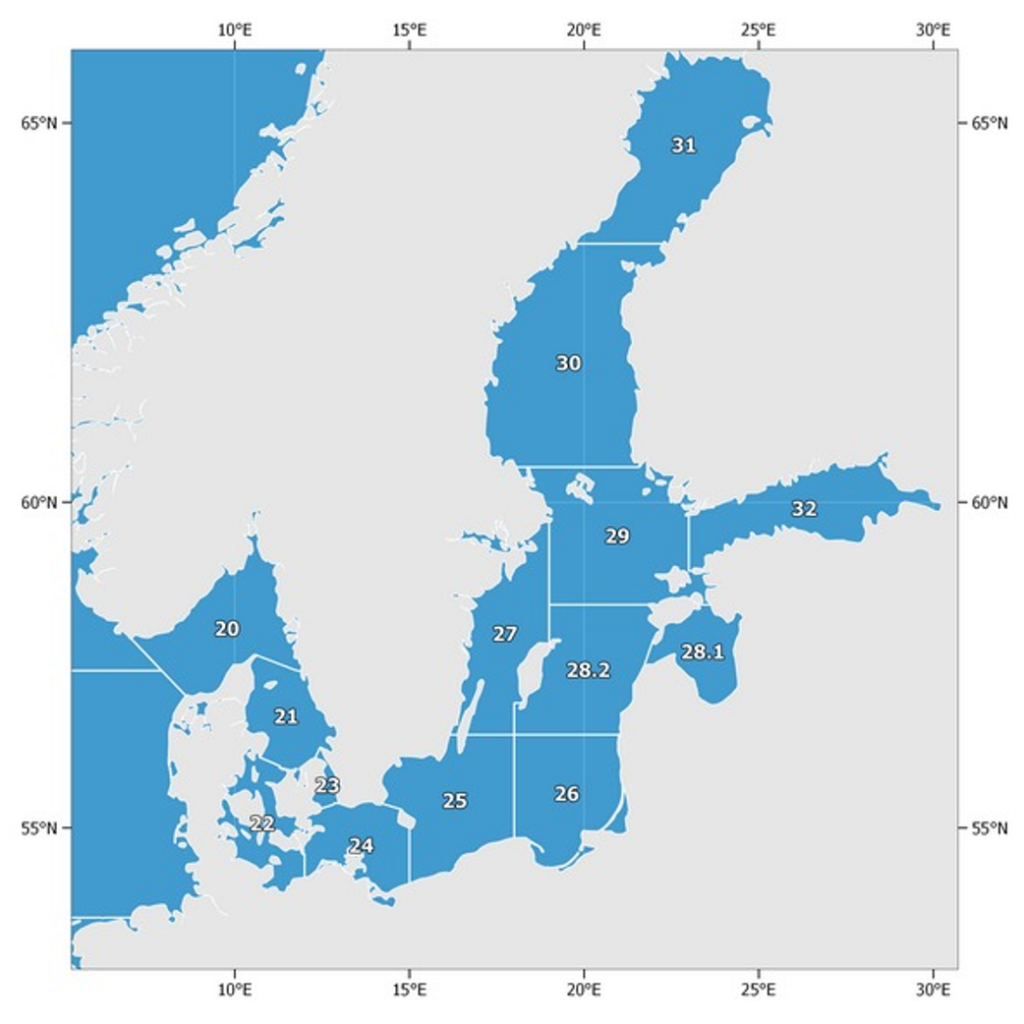As I mentioned in the Background & Aims section, there were two main things that I was trying to test with my thesis project:
- Do seal-safe pingers increase depredation in seals?
- Do seal-safe pingers reduce porpoise bycatch? What other factors affect bycatch?
Let’s have a look at how I tried to answer these questions.

Do seal-safe pingers increase depredation in seals?
There have been a few studies done on this, so I had a very nice starting point that I could base my experimental design on. The data collection was carried out over a three-week period, at the small islands of Utklippan, Sweden. This location was chosen because it is a known haul out site for seals, meaning they often relax on the rocks and shore between hunting trips at sea.
There were 16 of these buoy stations that you can see on the diagram on the right: five controls with no pinger, five with the FO pinger (60-120kHz), five with the Banana pinger (50-120kHz) and one with a custom PAL pinger. The idea being that if the seals can hear the pingers, they would take more bait from the stations that had pingers than from the stations that did not have pingers.
The stations were checked daily when the weather allowed it and the fish was replaced regardless of whether it had gone missing. Records were kept of any disappearing fish, as well as time of day, date the station was checked, whether the pinger was still working, location and camera status.
Do seal-safe pingers reduce porpoise bycatch?
This part of my project was inserted in the larger project that SLU Aqua has been carrying out over the past few years. Voluntary fishermen filled out logbooks containing various information about their fishing trips: the number of nets used, when these were deployed, the dimensions of the net (length, height and mesh size), how long the nets were in the water (soak time), if the nets had been deployed with or without pingers and finally whether any porpoises had been bycaught.
In addition to these logbooks, there were two onboard cameras, one on the outside of the boat pointing at the area where the nets would come out of the water while being emptied and the other on the inside of the boat to aid with species identification. This footage was collected every few weeks and analysed in a program called BlackBox Analyser.
The information from the logbooks was compared to the information from the camera footage, so that I could evaluate whether the logbooks can be considered a reliable method of studying bycatch rates. After this, the different parameters were modeled so that the effect of pingers on porpoise bycatch could be evaluated. The effects of net dimensions, soak time, year and fishing area were also analysed.
